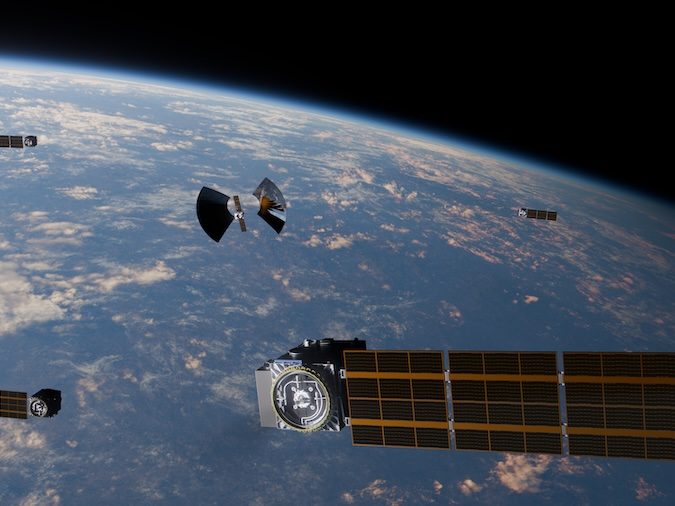Giant step for mankind: European Space Agency’s science mission lands on a comet in an odyssey which took 10 years, 510 million kms later

Rosetta was launched on 2 March 2004 and travelled 6.4 billion kilometres through the solar system before arriving at the comet on 6 August 2014. The comet is 510 million kms away from Earth.
Earlier images of the comet have been sent to the ESA from the mission orbiting 67P since August 6, revealing the comet as a world littered with boulders, towering cliffs and daunting precipices and pits, with jets of gas and dust streaming from the surface.
Jean-Jacques Dordain, ESA’s director general says on the ESA’s website: “Our ambitious Rosetta mission has secured a place in the history books: not only is it the first to rendezvous with and orbit a comet, but it is now also the first to deliver a lander to a comet’s surface.”
He adds: “With Rosetta we are opening a door to the origin of planet Earth and fostering a better understanding of our future. ESA and its Rosetta mission partners have achieved something extraordinary today.”
Ten years in space
Alvaro Giménez, ESA’s Director of Science and Robotic Exploration says: “After more than 10 years travelling through space, we’re now making the best ever scientific analysis of one of the oldest remnants of our solar system.”
Philae (Rosetta’s lander) actually landed earlier, but because the comet is 510 kms away, it took about 28 minutes for the signal to reach Earth.
Over the next 2.5 days, the lander will conduct its data collecting mission, assuming that its main battery remains in good health. It may rely on a second rechargeable secondary battery to continue its work which could last until March 2015, after which the ESA says the conditions inside the lander are expected to be too hot for it to continue operating.
Mystery of the solar system
Rosetta is trying to answer the very big questions about the history of our solar system. What were the conditions like at its infancy and how did it evolve? What role did comets play in this evolution? How do comets work?,” says Matt Taylor, ESA Rosetta project scientist.
In the next 13 months, Rosetta will follow the comet around the Sun watching as its activity changes and its surface evolves.
Afterwards Rosetta must manoeuvre from its post-separation path back into an orbit around the comet, eventually returning to a 20 km orbit on December 6.
Next year, as the comet grows more active, Rosetta will need to step further back and fly unbound ‘orbits’, but dipping in briefly with daring flybys, some of which will bring it within just 8 km of the comet centre.
Closest to the sun
The comet will reach its closest distance to the Sun on August 13, 2015 at about 185 million km, roughly between the orbits of Earth and Mars. Rosetta will follow it throughout the remainder of 2015, as they head away from the Sun and activity begins to subside.
While Philae begins its close-up study of the comet, Rosetta must manoeuvre from its post-separation path back into an orbit around the comet, eventually returning to a 20 km orbit on 6 December.
Next year, as the comet grows more active, Rosetta will need to step further back and fly unbound ‘orbits’, but dipping in briefly with daring flybys, some of which will bring it within just 8 km of the comet centre.
NASA has several other scientific missions including Juno, which was launched August 5, 2011 which is heading for Jupiter, estimated to arrive July 4, 2016. Another one is New Horizons, also a NASA mission, expected to reach Pluto between January and August 2015.
About comets
Comets are the most primitive objects in the solar system. Many scientists think that they hold information of the physical and chemical processes that occurred during the early stages of the evolution of our Sun and the solar system.
Their volatile material demonstrates comets were formed at large distances from the Sun and have been preserved at low temperatures since their formation. Scientists hope the material can tell us what happened between the Sun and the solar system’s birth.




